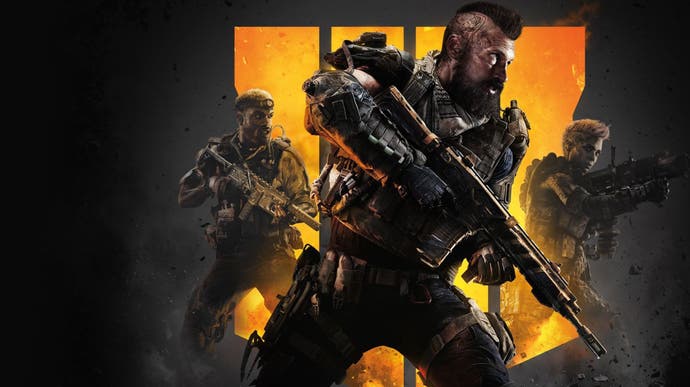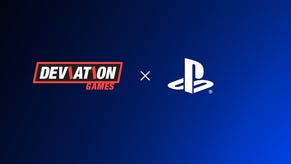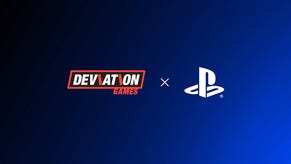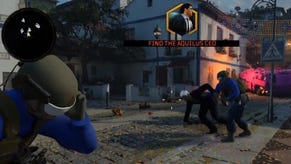COD Black Ops 4: behind the scenes on Blackout, Battle.net - and the new focus on PC
DF sits down with Treyarch to talk tech.
We're mere days away from the launch of Call of Duty: Black Ops 4 - a game that takes the series in brand new directions, removing the campaign element completely and introducing us to Treyarch's take on battle royale. But there's more - including a concentrated focus on making the PC version of the game the best it can possibly be, while simultaneously moving the title to Blizzard's Battle.net for the first time. What we're looking at here is the biggest fundamental shift to the COD proposition since Modern Warfare - and in fact, depending on the success of the new game, the make-up of a COD series entry may never be the same again.
During the recent EGX Berlin - where developer Treyarch hosted a panel - Digital Foundry had the chance to sit down with members of the development team to discuss the game, the stronger emphasis on PC, how the team tackled battle royale and the technological challenges in integrating this new game mode with their existing technology. And yes, we asked the question - will the single-player campaign ever return to Black Ops?
At this point, arguably BLOPs 4's biggest draw is inescapably Blackout - and from a Digital Foundry perspective, we've found the beta period especially fascinating. On paper, the concept is compelling - the COD studios have spent 11 years defining, tightening and refining a killer multiplayer experience based on fast movement and short, sharp, brutal encounters. It's all framed by an innate understand of how a weapon should feel in the hand, how it fires and the damage it produces. Blackout transfers all of this learning - with further, extensive tweaking - into battle royale, a totally different kind of combat both in terms of environments, detail and of course, player count. And it does so while retaining the series' signature target 60fps. How does an engine traditionally associated with tighter multiplayer maps and a linear campaign cope with this new challenge?
"I understand the perspective people have about what the game engine that we use and have available to us can do or not do," says David Vonderhaar, studio design director of Call of Duty: Black Ops 4. "I understand why people might have that perspective, but it's actually not a fair assessment of the technology that we use. This is a very talented group of graphic and core engineering and online engineering [staff] who've been developing this technology for a very long time, so the reason why folks might say that it's not capable of doing this is because we hadn't done it before, but just because we haven't done it before doesn't necessarily mean that it can't do it."
Where the COD games continually excel year upon year is in just how much technology they cram into the 16ms render time necessary to hit the target 60 frames per second. It's about continual technological innovation but part of this process is down to a focus on optimisation. "We broke through every engine limit - which is a effectively a number to keep us from hurting ourselves - but it's not real because you break through the number and you optimise and then you break through and you optimise," says David Vonderhaar.
In terms of innovation, Treyarch actually deployed work-in-progress technology that proved invaluable in creating the Blackout environment. It's called Super Terrain - originally designed for another project, but instrumental in creating a world as rich as Blackout's. Essentially, Treyarch's designers can 'paint' the world in broad strokes, with procedural generation used to create micro detail, before the artists go in to handcraft extra detail.
The Blackout map also benefits from interior detail built with the same kind of expertise that goes into the standard multiplayer maps - there's far less of the random, barren building design seen in PUBG. Additionally, as long-term COD fans have noted, key elements of prior MP maps are incorporated into the Blackout environment. So, for example, Raid and Stronghold maps are combined together to form a high-end housing block, and it's inserted into the appropriate area of the map. Then there are areas including the asylum, lighthouse or diner brought over from or inspired by Black Ops' zombie mythology - adding new NPC enemies for the players to take on. And finally there are entirely new areas like the construction zone. Everything was balanced to ensure variety in encounters too - close quarters vs ranged combat, long range vs verticality.
There's more of a bespoke, handcrafted feel to the Blackout map and certainly compared to PUBG's console outing, far more of a sense of technical competence. Take the game's foliage systems, for example. They're just as lush as PUBG's - if not more so - but they seem to possess improved draw distances - and don't tank performance. And special care is taken to ensure that the cover properties of grass (and indeed any object) aren't nullified by turning the PC version's settings down. In contrast to other battle royales, the current Blackout map is locked to set lighting conditions, but Treyarch is also considering adding in a gradual movement in the time of day.
"So the question is hey, what do you do about time of day settings, is it impossible?" says David Vonderhaar. "It's actually very possible but we want to be sure that when we unlock that capability in the Blackout map, that we do it in a way that's not impacting the performance of the existing time of day. So, we actually have that capability and it's when and how do we deploy that capability. As we said, we're not going to sacrifice performance for something like time of day, but if we can get time of day changes to work in a way that will not impact the performance of the map, you'll probably see that in the future."
And performance considerations go beyond the consoles alone. Similar to the successful template laid down by Bungie for Destiny 2, Treyarch has teamed up with a talented companion studio - in this case, Beenox - to ensure a strong PC version of Black Ops 4, while relying on the infrastructure and testing facilities offered by Blizzard with battle.net.
"Let's make something clear for the folks out there," says Thomas Wilson, co-studio head and creative director at Beenox. "This is not a port. Black Ops 4 on PC is parallel development."

And based on our hands-on time during the Blackout beta, it's also quite a piece of work, featuring some of the most in-depth customisation options we've seen. You have the basics like key binding options and field of view adjustment, but it goes further. You can, for instance, customise the default field of view and aim-down sights FOV separately, you can change how the mouse behaves in different situations, and the way specific key actions function, how vehicles work - and that's just the beginning. Remarkably, Black Ops 4 PC even has a separate team working on its user interface.
"Working a new UI for a PC game requires a lot of attention," says Wilson. "And there's so many menus - especially in the game like Black Ops 4 - that it takes a dedicated team to work on that. I've worked on games in the past where there were only two UI artists and this is how we were making games - and now we have an entire dedicated team actually where their responsibility is working on the UI of the entire game."
Aspects such as ultra-wide support are no problem, while moving to an uncapped frame-rate across the board is the way forward. At launch, however, standard multiplayer will run unlocked, while Blackout will top out at 120fps... to begin with, at least.
"For the Black Ops beta, we did have to cap frame-rate at 90 frames per second as we were testing and optimising server performance," says senior PC producer Jonathan Moses, an id software veteran who's previously worked on Doom 3 and Return to Castle Wolfenstein. "We learned a lot during that beta. For launch, we're going to be coming out at 120 frames per second - or capping at 120Hz - with the expectation that we are going to move towards uncapped frame-rate within the days that follow. We want to continue to monitor servers as we test capacity."
Beenox is also working on bespoke customisation for the PC version of the game, specifically on aspects including the feel and balance of weaponry with PC's very different input interfaces. It's one of the reasons why cross-play isn't an option between consoles and PCs: while the core is the same, there's deeper tuning here that separates each version. And in actual fact, there can be variances between modes within the same version of the game.
"We tune the weapons appropriately for the mode," David Vonderhaar tells us. "They can be different but the spirit and core of the gun does not change and this is super-important. So if a weapon is, say, the stealthiest weapon in the game, it must be the most stealthiest weapon in both portions of the game - so the core nugget, the core philosophy, the core heart and soul of a gun will not change between the two modes of the gun - but the tuning of it, specifically damage and ranges and kickback will definitely change."
There's also a cross-pollination of ideas between multiplayer and Blackout as development of both occurred in parallel, sometimes with the same staff.
"The great thing about working on Blackout and multiplayer is that the technology that you end up developing to service Blackout - for example, the ballistics on the weapons - they absolutely can find their way back into multiplayer," Vonderhaar continues. "In fact, multiplayer and Blackout development is happening at the same time. A lot of the people who have worked on multiplayer historically are now working on Blackout and there's people actually working on both, so we take that experience and we apply that back, so you might see some aspects of the ballistics where it makes sense to show up in multiplayer, right? A lot of the work for the Super Terrain and the development of how you go about making the world as fast as you can wouldn't exist if it hadn't started over in multiplayer, then enhanced over here because of Blackout. So these are not different aspects of the technology. The tool chain, the pipeline, even a lot of the production methodology and certainly the design philosophy exists in both portions of those games."
The concept of balance is crucial to Call of Duty, and we were curious to know what Treyarch can adjust at the backend without the need to roll out a patch to users.
"When it comes to anything that's in, say, script or data, we can change that on the day, so you can make some pretty rapid changes. If it requires executable changes - meaning code changes - that has to be compiled, that requires an update," explains Vonderhaar. "So we can change a lot of things, because a lot of things are in script or a lot of things are in data, and they're allowed to be changed as a result of that. That's when you see when you log in that game settings have been updated - that's us changing something about the game. So it's not specifically the map but it might be something in the map: how many vehicles there are, maybe there are too many trucks being spawned and we need fewer trucks and more ATVs. So we use this data, we iterate quite rapidly throughout the day, we have a whole process in place about what we're gonna change, changing it, testing it and having it available the next morning by 10:00am our time."
Treyarch has also deployed systems to measure and more importantly visualise the vast amount of incoming data and telemetry. Vonderhaar points to the heatmap of player deaths as an example of one data point that's tracked and how it's represented to the team.
"So, data is super-important, the visualisation that data is what actually allows us to fine-tune the game," continues Vonderhaar. "Tuning a game like Blackout is really based on three major things: what the community is trying to tell us, what the data says and how we personally believe and feel how things are working."
The integration with Battle.net also has benefits. "Blizzard and Battle.net have been focused on the PC audience for a very long time and being able to tap into that expertise has enabled us to focus on things like compatibility," explains Jonathan Moses. "They've got fantastic access to hardware that we're able to test on to make sure that the game is going to work great right out of the gate. Their security experts have been able to collaborate with the security team at Treyarch and with Activision to make sure that when the game comes out, it's going to be the most secure, most stable experience for the players. Also, getting feedback from Blizzard has been fantastic. They're hardcore PC players and they've been able to give us a perspective that we've been able to bring back into the game as well."
In the run-up to meeting the team, I spent a lot of time playing the PC version of the Blackout beta. I feel that battle royale is the most interesting portion of the new game and I'm quite impressed with what the team has achieved here. Delivering a large open map with this amount of detail while targeting 60 frames per second on console platforms is no small feat and the game itself is shaping up to deliver a great experience.
Beyond that, I feel that the team is living up to their promises on the PC side of things and this partnership between Beenox, Blizzard and Treyarch looks set to pay off. In fact, based on the beta showing, the PC version proved to be the most stable, consistent experience of all the platforms, with improved performance and fewer of the visual compromises found in the console versions. Performance is the one area I'd like to see some improvements on the Xbox and PlayStation side, but the PC version is already looking solid. And again, the level of customisation built into the game is state of the art - the sense is of a PC game built to be esports-ready.
The technology on display is also intriguing. The addition of Super Terrain opens the doors in a big way for the game - this is the kind of change that could be implemented in future games in order to expand the series in new directions. And the big question for me is how the shift delivered by Black Ops 4 could impact the series going forward. Canning the campaign and delivering battle royale poses a big question - can the next COD go back to a standard multiplayer experience paired with a linear single-player mode?
On the one hand, battle royale combined with COD mechanics is an excellent match that sets Black Ops 4 apart, but I've always enjoyed the Black Ops campaigns - even Black Ops 3 with its super-bizarre storytelling - so it's a shame to see it removed. The question I had leaving the interview was simple enough then - is there any hope of seeing the single-player campaign return?
"I don't know. We are focused 100 per cent on October 12th," says David Vonderhaar. "I'm sure that we are not done telling stories - and we never tell the story the same way twice. I think there's some opportunity but let's just get to October 12th... please."
















